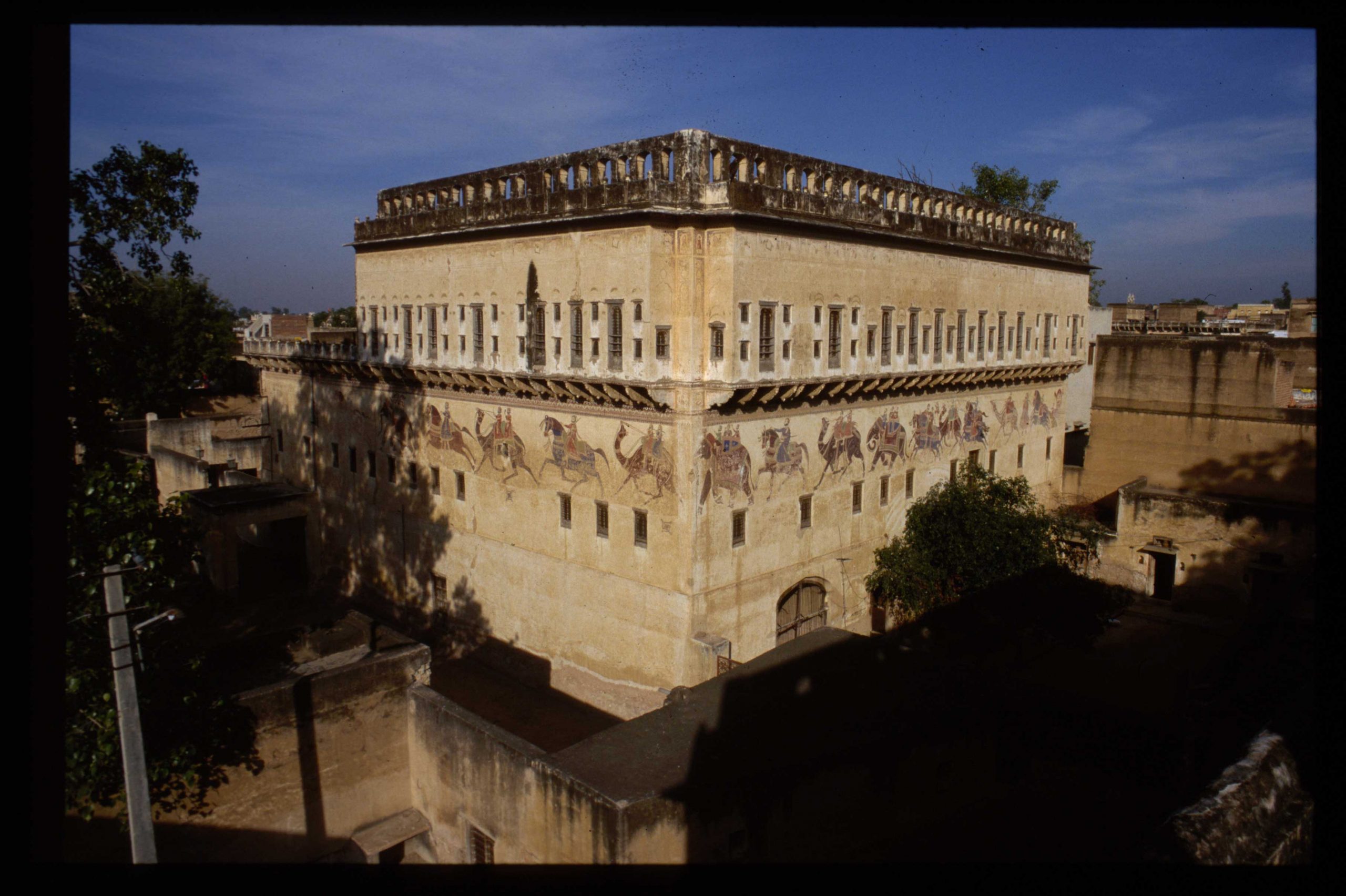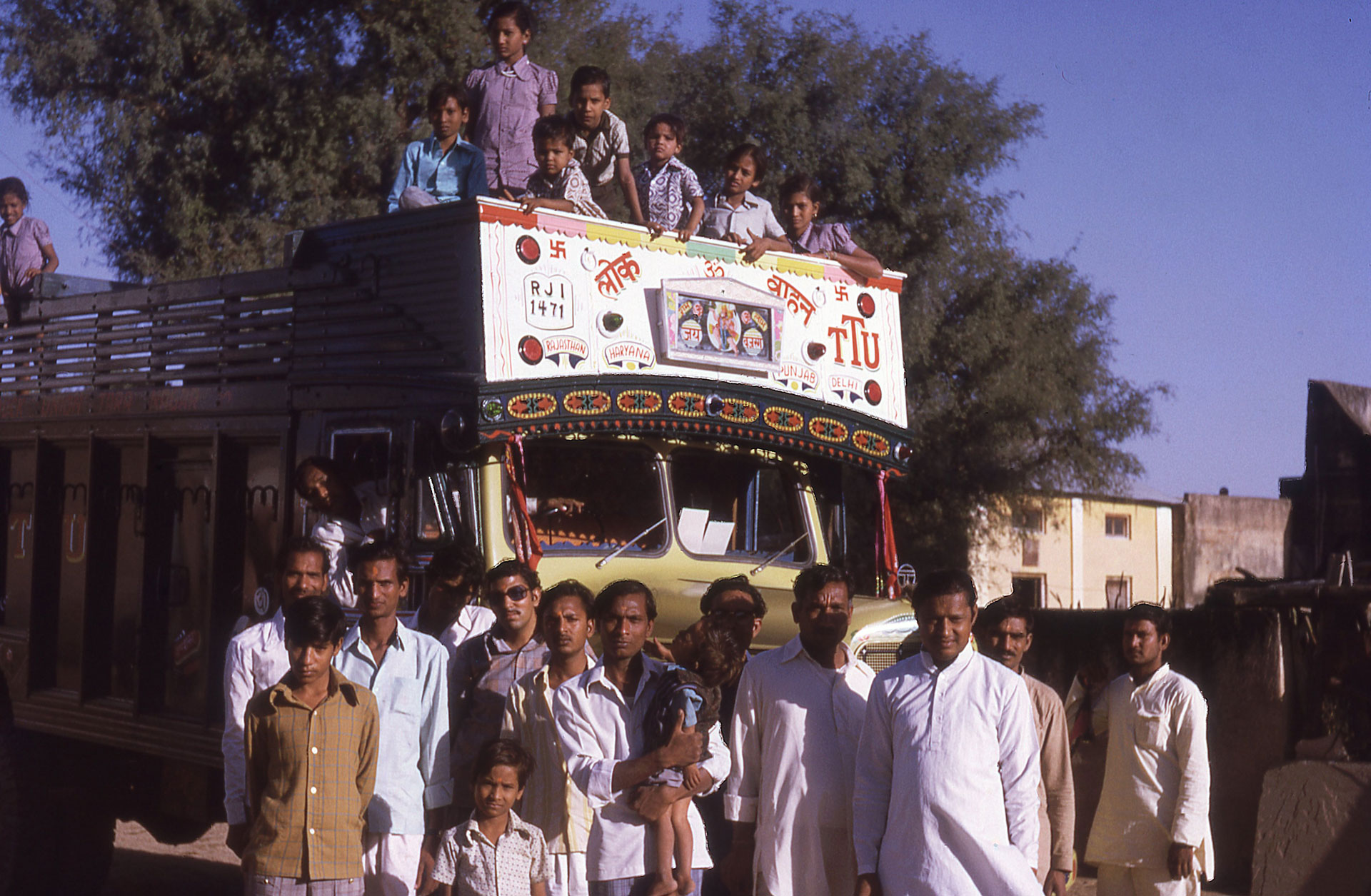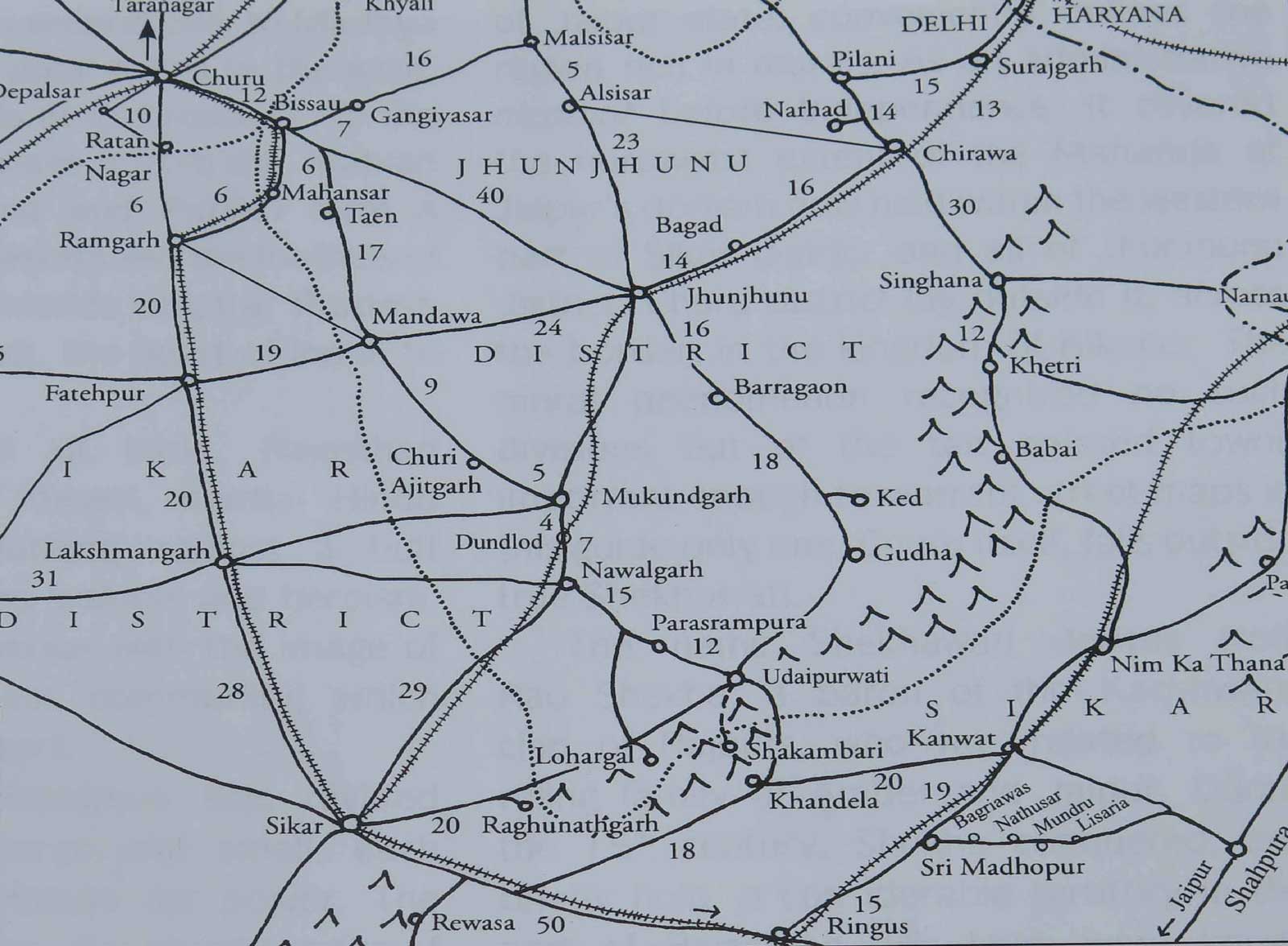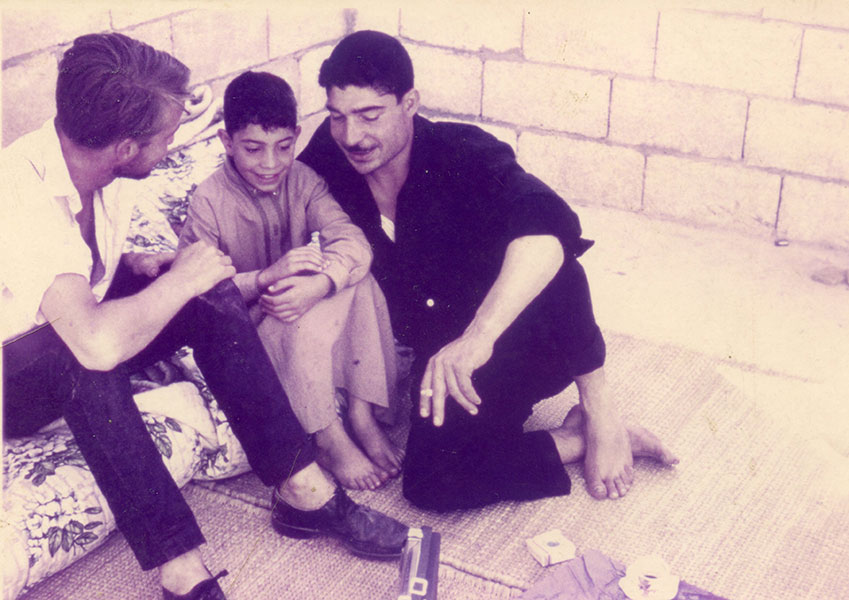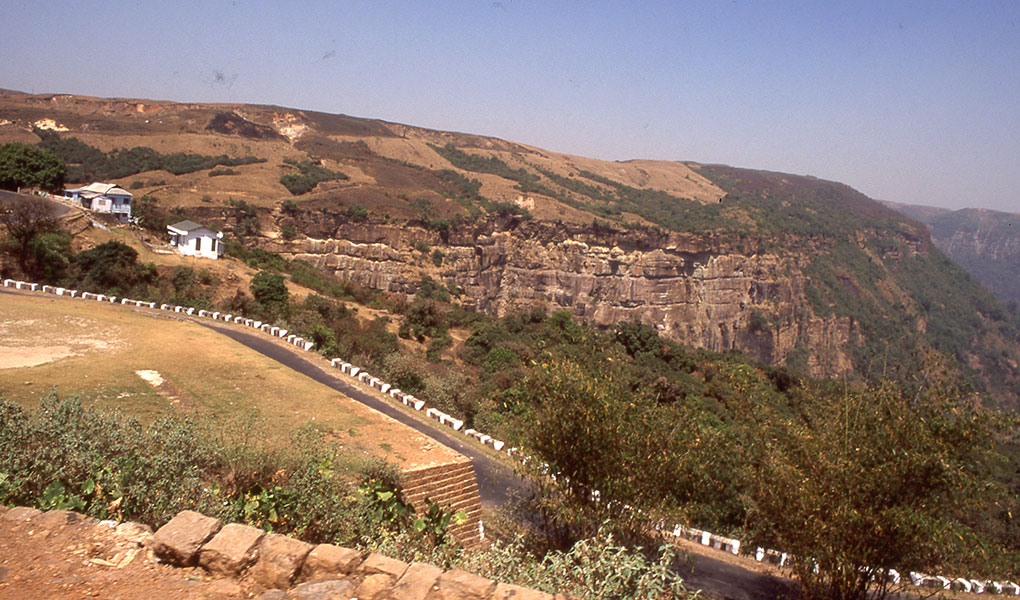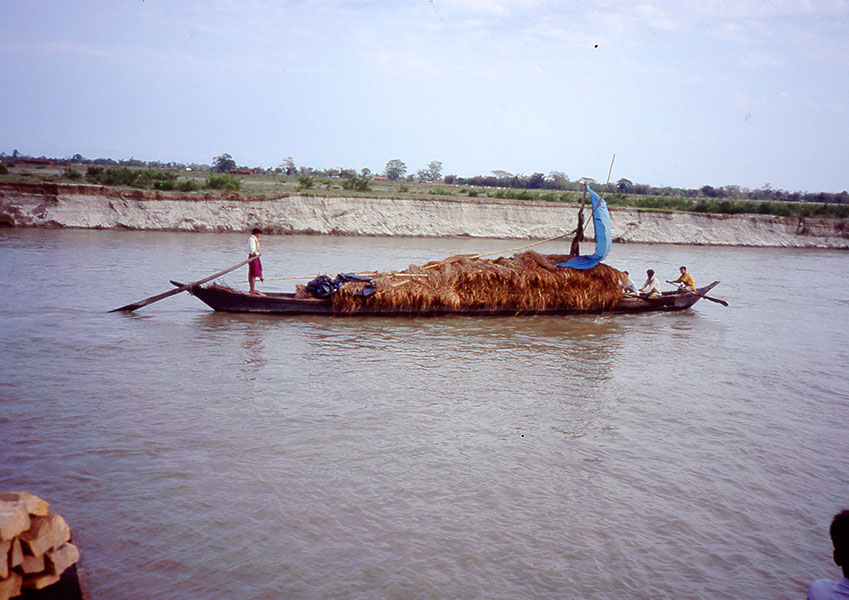6. Closing In On Churu Town

5. Into India
May 14, 2020
7. Writing On Shekhawati Murals
May 28, 2020T hese wanderings began with an aimless cycle journey which, on its second day came upon striking painted havelis, mansions, at the fringe of a Rajasthani region now neatly named Shekhawati. When writing for the tourism department's journal, 'Yatri', cameraless, I h ad no images of these havelis. In autumn 1975, armed with a basic second-hand Praktica camera, I set to work. A friend teaching at Birla Institute of Technical Science, in Pilani, invited me to visit. He was conveniently close to Taranagar, where I'd first seen those havelis.
The Birla clan, who founded the Institute, was prime amongst the Rajasthani trading fraternity, the Marwaris, who financed the painted buildings. At Independence, freed from a colonial economy, many Marwari merchants invested in manufacturing industries. Their names, famous throughout India, often derived from a Shekhawati hometown: there were Jhunjhunuwalas, Fatehpurias, Sikarias, Ramgarhias, Singhanias, Kedias, Birlas, Dalmias, Poddars... The old Birla haveli in Pilani contained a museum and a busy office for family charities. The door of its inner sanctum was guarded by two unmoving saffron-turbaned guards. They remain immobile, fashioned from cement. A mere village now lost beside the modern campus, Pilani had few painted buildings.
The bus to Taranagar stopped beside a rest house. Once established there, I found Mr Goel, my previous host, was preparing to leave to holy Salasar for the blessing of his new truck. He insisted I come, offered a seat in the cab but, keen for the best view, I joined the young men seated on top of it. The narrow road cut across sandy desert and we diverted to impress acquaintances, I noted each more or less painted little town. Duly blessed, we posed beside the truck before returning by another route.
With a list of painted towns, I set out to visit them. The last two, Fatehpur and Ramgarh, were best. Alongside havelis, Fatehpur had a 17th century bowri, stepwell, well advanced towards ruin, dug to the deep desert water table, which had sunk still deeper. That day ended with a swim in the algaed-green water of another merchant construction, a johara, rainwater reservoir. At Ramgarh, Sitaram, studying Ayurvedic medecine, showed me a multitude of painted buildings through his grid-plan town, including temples and collections of chhatris, pillared-dome cenotaphs each raised to some rich man's father. New mural work decorated mosques built by Muslim masons with wealth sent back by their fellows settled in Gulf States. We watched kabaddi, a fast game of breathless evasion, requiring nothing but the ground to play on.
Aiming for Jhunjhunu next day, I was delayed by more kabaddi and, missing the last connection in Churu, put up at Annapurna Hotel, opposite the station. Cheap and cheerful, I would spend years in its Room 3. The place is bigger, posher now.
Next morning, searching for painted buildings, a student came up and offered tea at his home. I wanted paintings, not tea. He offered tea at his shop. No! Finally, as we passed a tea-house, he said 'This place serves the best tea in Churu'. So I drank his tea and we have been friends ever since. Nand Kishore Chaudhary – Nandu to me – an Aggarwal, the principal local business caste, was running Bharat Boot House, a shoe shop in Gudri Bazaar. He had an eye open for a brighter future.
In preparation for Diwali, the small, open-fronted shop was being cleaned and painted. I sat amongst shoes, drinking tea, as customers passed through. Apparently sales were much improved by the added attraction of a foreigner. On Diwali night, darkest of the year, a special meal, richly laced with over-sweet sweets. Nandu's flat roof, margined by candles and little oil lamps, overlooked an illuminated town until, system overloaded, the electricity failed, leaving only the gentler flames.
Knowing little of painted buildings and frankly uninterested, he showed me Nathji, the town's holy place, and the gaoshala – hospice for superannuated cattle - both interesting but unimpressive. But there were good buildings in Churu, amongst them Kanhaiyalal Bagla Haveli, with the best painted frieze in the area, and the 18th century Eight-Pillar chhatri, half-buried in years of blown sand. The local historian, Govind Aggarwal, informative and generous with his knowledge, was working on Churu's merchant papers in Nagar Sri, the cultural centre he'd helped to found. English written in copperplate proved difficult, so I typed out some letters for him. One concerned a dispute between two Churu merchants based in Calcutta: by coincidence my great, great grandfather's law firm, Watkins and Stokoe, represented one side!
Still not committed to Shekhawati, I travelled widely through India that winter, but returned to explore further and take more photographs, writing an illustrated article, which was published in 'Illustrated Weekly of India' the following year. The week it came out I took the first post Indo-Pak war train from Amritsar to Lahore and on it met a Frenchman working in Delhi, who was looking for some subject close by to interest himself. Another railway conversation! Having no plans to take the subject further, I mentioned the murals and my article. He was Francis Wacziarg.
So far, every India trip had been overland but, as fares reduced and winter approached, this time I flew home - Ariana Afghan Airlines. There, seeing the images, friends suggested writing a book. Returning in 1978 to start work, I heard that Francis Wacziarg and Aman Nath had already started one. Undeterred, I bought a new, blue Atlas bicycle, put it on top of a bus to Jhunjhunu and cycled from there to Churu via Sikar. That route, with a few deviations, happened to pass the best painted towns. I explored each in turn.

